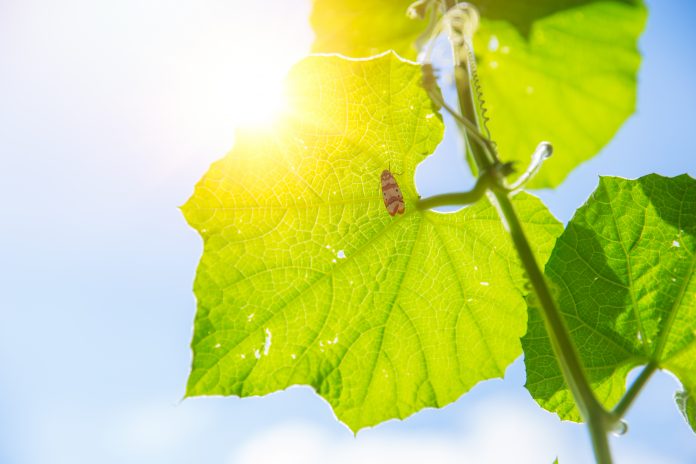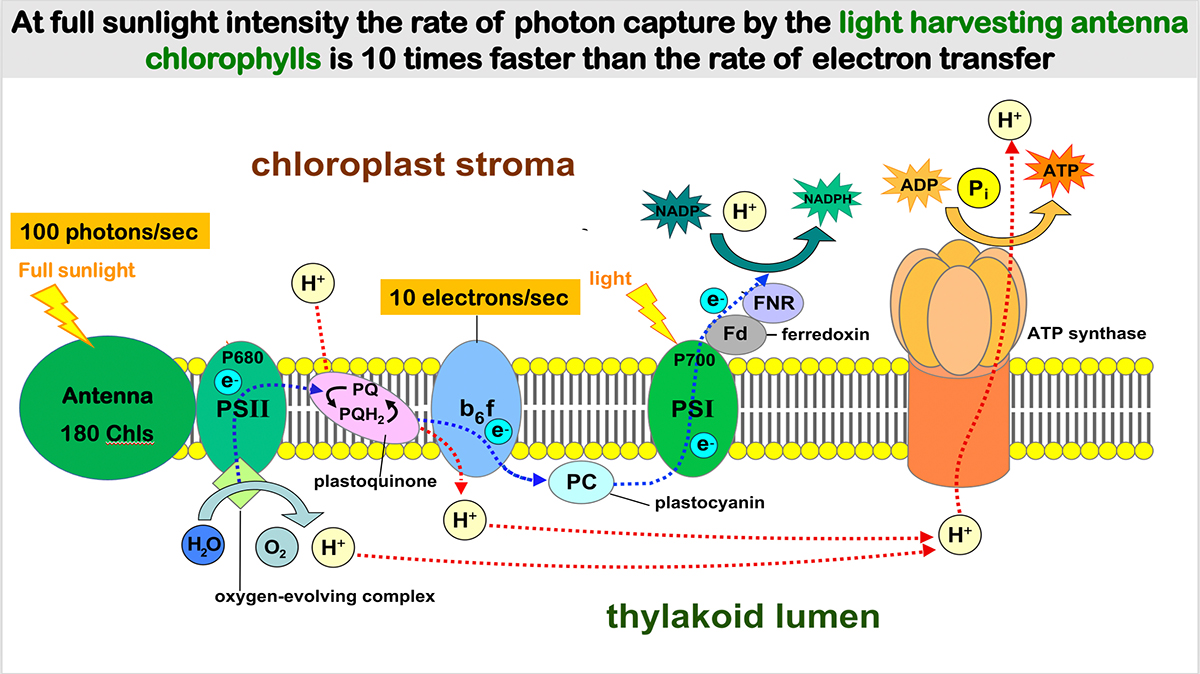Richard T Sayre, Senior Research Scientist at New Mexico Consortium in the U.S., walks us through engineering improved photosynthesis for enhanced food production & carbon sequestration
One of the major constraints limiting food production and biological carbon capture is the low efficiency of converting solar energy into the chemical energy of biomass. In plants and algae, the conversion of light energy into chemical energy begins with the process of photosynthesis. Photosynthesis is the largest biochemical process on earth, it provides virtually all the reduced carbon (food) that is consumed by animals, and it is the source of the earth’s atmospheric oxygen. Given these superlatives, it is surprising that the overall process of photosynthesis is thermodynamically very inefficient. The thermodynamic efficiency for the conversion of solar energy into biomass typically ranges from 1 to 4%. Theoretically, photosynthetic energy conversion efficiencies as high as 11% are possible using sunlight and could be as high as 30% when using red photons which are efficiently absorbed by chlorophyll molecules. The overall message here, however, is that there is substantial room for improvement in photosynthetic carbon capture systems. If we are to meet food demands of a growing population as well as sequester carbon to reduce global warming in a world having limited arable land and water, even marginal improvements in photosynthetic efficiency could have a substantial impact.
Efficiency of photosynthetic carbon fixation
Multiple strategies have been pursued to improve the efficiency of photosynthetic carbon fixation at the whole plant level. These strategies range from targeted improvements in photosynthetic light capture and energy conversion processes, to improvements in CO2 fixation efficiency and the reduction of CO2 to sugars, to more efficient biomass allocation and accumulation in storage organs to reduce feedback inhibition and optimise carbon flux from CO2 to end products. Collectively integrating metabolic engineering strategies that simultaneously increase photosynthetic rates (source strength) and end-product accumulation (sink strength) will result in the greatest increases in biological carbon capture and food production.
To achieve these objectives, it is necessary to identify the limiting processes in photosynthesis, downstream carbon conversion processes and carbon allocation to storage products. Intuitively, those steps that result in the greatest inefficiencies in energy conversion should be the first targets for metabolic engineering strategies to improve photosynthetic CO2 capture and biomass accumulation. It is now apparent that the most inefficient step in photosynthesis involves early steps where light energy is converted into chemical energy. Between 50-80% of the light energy captured by the photosynthetic light-harvesting pigments (chlorophylls) is lost during the conversion of high-energy, excited state chlorophylls into chemical energy.
Light-harvesting antenna
At full sunlight intensity, the chlorophylls of the light-harvesting antenna capture photons at a rate of 100 photons per second per electron transport chain. Significantly, there is a bottleneck in the electron transport chain that limits the flux of electrons to 10 electrons per second. Since one photon could theoretically drive one electron through the electron transport chain, this bottleneck results in the loss of energy from over 75% of the captured photons through non-productive energy emission pathways, including the release of heat and fluorescence.
This realisation led to the question; how such an inefficient energy utilisation process would offer any evolutionary fitness advantage. Two possible scenarios may have led to the evolution of large, inefficient light-harvesting antennas. First, having a large and inefficient light-harvesting antenna allows for light to be captured at very low light intensities such as those that occur deep in the plant canopy or deep in the ocean. Organisms having large light-harvesting antennas could survive and potentially reproduce in limiting light environments. A second plausible hypothesis is that by capturing most of the light impingent upon a plant canopy, less light is available for competing species due to shading. Thus, offering a competitive advantage to plants having a large, but wasteful light-harvesting antenna.
Humans, however, typically grow crops as monocultures so interspecies competition for light is not generally a concern. In addition, it would be desirable to have the most efficient photosynthetic apparatus possible to utilise as much of the available solar radiation as possible to produce crops and reduce resource inputs (land, fertiliser, and water).
Recently, we demonstrated in a series of articles published in The Plant Journal (1) and Scientific Reports (2) that it is possible to alter the size of the light-harvesting chlorophyll antenna to better couple rates of photon capture with downstream limiting rates of electron transfer. Thus, reducing energy losses associated with the dissipation of excess captured energy as heat or fluorescence. The molecular strategy for this was based on alterations in the production of chlorophyll b, one of two types of chlorophyll found in green algae and plants. Significantly, chlorophyll b is present only in the light-harvesting antenna and is not present in the photosynthetic reaction centre complexes where charge separation and electron transport processes are initiated. By reducing the production of chlorophyll b in engineered plants and algae it was possible to optimise the size of the light-harvesting antenna to more efficiently utilise all the energy captured by the chlorophylls for CO2 fixation.
Furthermore, by regulating the production of chlorophyll b in a light-dependent manner, it was possible to tune the size of the light-harvesting complex so that it was smaller at high-light and larger at low-light intensities. In green algae engineered to express self-adjusting, light-harvesting antenna photosynthetic rates were nearly doubled, resulting in two- to three-fold increases in biomass yield. For plants, an optimal fixed size antenna was also identified that resulted in a 40% increase in biomass yield in outdoor field trials. This enhanced antenna size corresponded to a loss of approximately one-third of the peripheral light-harvesting complex antenna present in the parental strains.
Photosynthetic efficiency & carbon capture
Overall, these results demonstrate pathways for substantial improvements in photosynthetic efficiency and carbon capture. When coupled with advances in improved CO2 fixation, carbon allocation, and sequestration it is feasible that biological, light-driven carbon capture could achieve 3- to 4-fold increases in biomass yields contributing to greater food security, environmental stabilisation and atmospheric carbon remediation.
References
(1) Negi et al. (2020) The Plant Journal, doi.org/10.1111/tpj.14751
(2) Friedland et al. (2019) Scientific Reports, doi.org/10.1038/s41598-019-49545-8.
Please note: This is a commercial profile












